SPEED – SPectral Eye vidEo Database
In this website we provide information on a SPectral Eye vidEo Database consisting of seven channel eye movement videos and 51 channel still eye images. Online distribution is under consideration. For data access and further information, please contact MSc Ana Gebejes at any time with email ana.gebejes (at) uef.fi
Database video
Description
The SPEED database consists of 180 spectral videos of eye movement during an observational task and 30 still spectral images of the left eyes of 30 voluntary human subjects. Spectral videos are seven channel videos captured over the wavelength range of 380-1000 nm. Spectral images are 51 channel still images in the range of 450-950 nm. Unfavorable conditions, such as eyewear reflections, extreme angles and make-up were incorporated. One 51 channel images is about 140 MB in size and it is available in a form of 51 TIFF images. One seven channel image is about 20 MB available as a seven channel MATLAB matrix. On average, one spectral video contains about 80 frames giving a total of approximately 14,400 images. Each video is about 5 s long resulting in a size of about 1,6 GB on average. Per subject about 9,8 GB of data was collected that gives a total of about 293 GB.
The associated journal article for the data is SPEED: SPectral Eye vidEo Database where the data acquisition process is described in detail. In the manuscript we also introduce and provide examples of possibilities of the usage of this database.
Citing
For the database itself:
Gebejes A., Fält P., Bednarik R. and Hauta-Kasari M. (2016, September). SPEED: SPectral Eye vidEo Database. In Proceedings of the 2016 ACM International Joint Conference on Pervasive and Ubiquitous Computing: Adjunct (pp. 1666-1675). ACM. DOI: 10.1145/2968219.2968335
Bibtex-entry:
@inproceedings{gebejes2016speed,
title={SPEED: SPectral Eye vidEo Database},
author={Gebejes, Ana and F{\"a}lt, Pauli and Bednarik, Roman and HautaKasari, Markku},
booktitle={Proceedings of the 2016 ACM International Joint Conference on Pervasive and Ubiquitous Computing: Adjunct},
pages={1666--1675},
year={2016},
organization={ACM}
}
Database content description
More specifically the database contains the following sets:
- 51 channel spectral image collection: still spectral image collected to serve as spectral ground truth
- seven channel spectral video collection: videos of eye movement recorded under two different light sources: standard illuminant simulator D65 (simulates sunny daylight of 6500K) and TL84 (simulates fluorescent office light) for the following cases:
- standard – the most controlled case with a clear view of the eye (a, f, h)
- with eye glasses (own or glasses provided) – introduces shadows and reflections (b)
- with 3D-printed eye glasses – introduces extreme shadows and reflections (c, e)
- seven channel spectral image collection: under D65 and TL84 while wearing sunglasses.
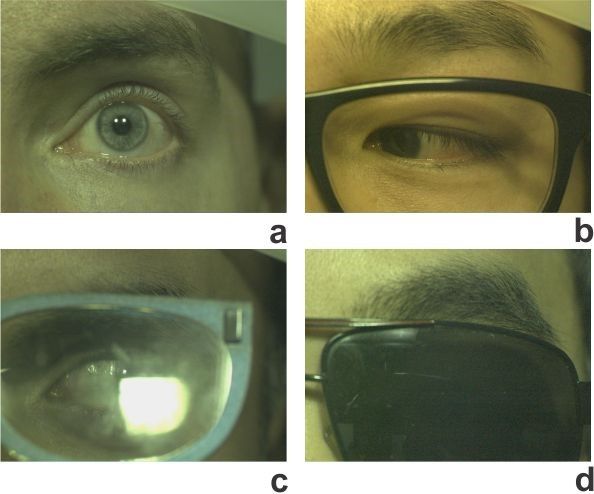
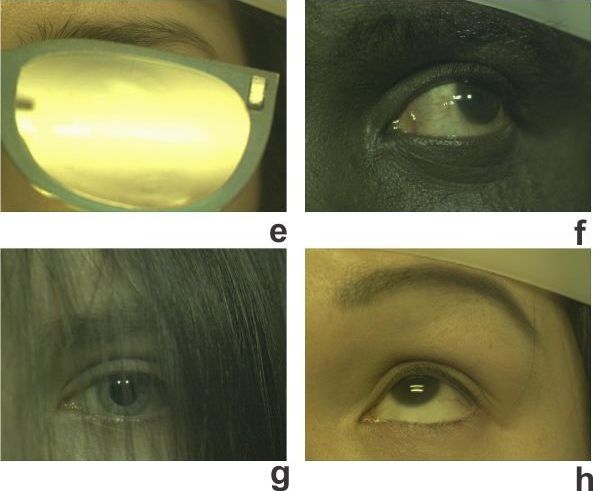
The subject group is multinational: 15 different nationalities covering Caucasian, Asian and African ethnicities (a, b, f). The following infographic summarises the basic subject group statistics.

Example data
Below we show one example of a calculated sRGB image from the 51 channel spectral image. Next to it we show an example of the spectral image data usage. We identify six spectrally different features in the eye region.
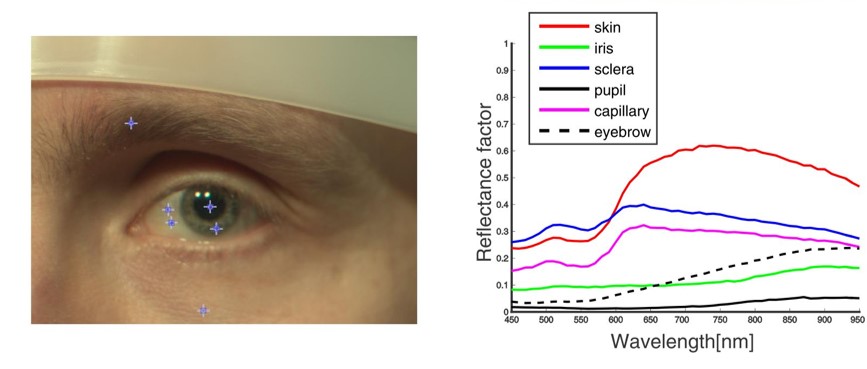
Another example shows five selected frames from one standard FD video and one extreme condition FD video.
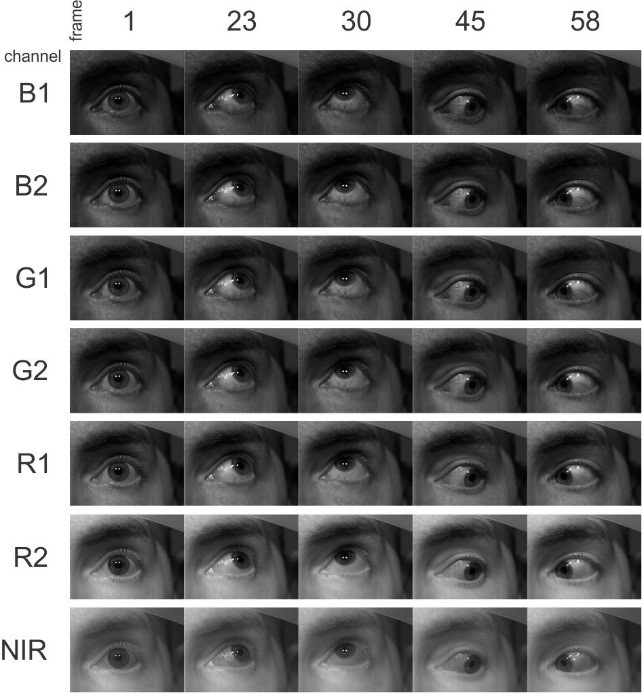
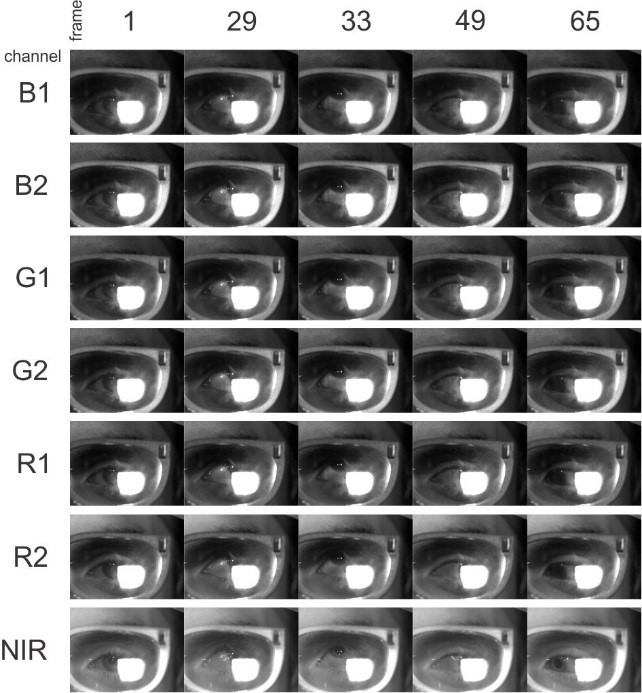
Sharing license of the database data
The SPEED database is licensed under a Creative Commons Attribution-NonCommercial-ShareAlike 4.0 International License. Anybody is free to publish any papers containing results derived from this database as long as the database is cited properly.